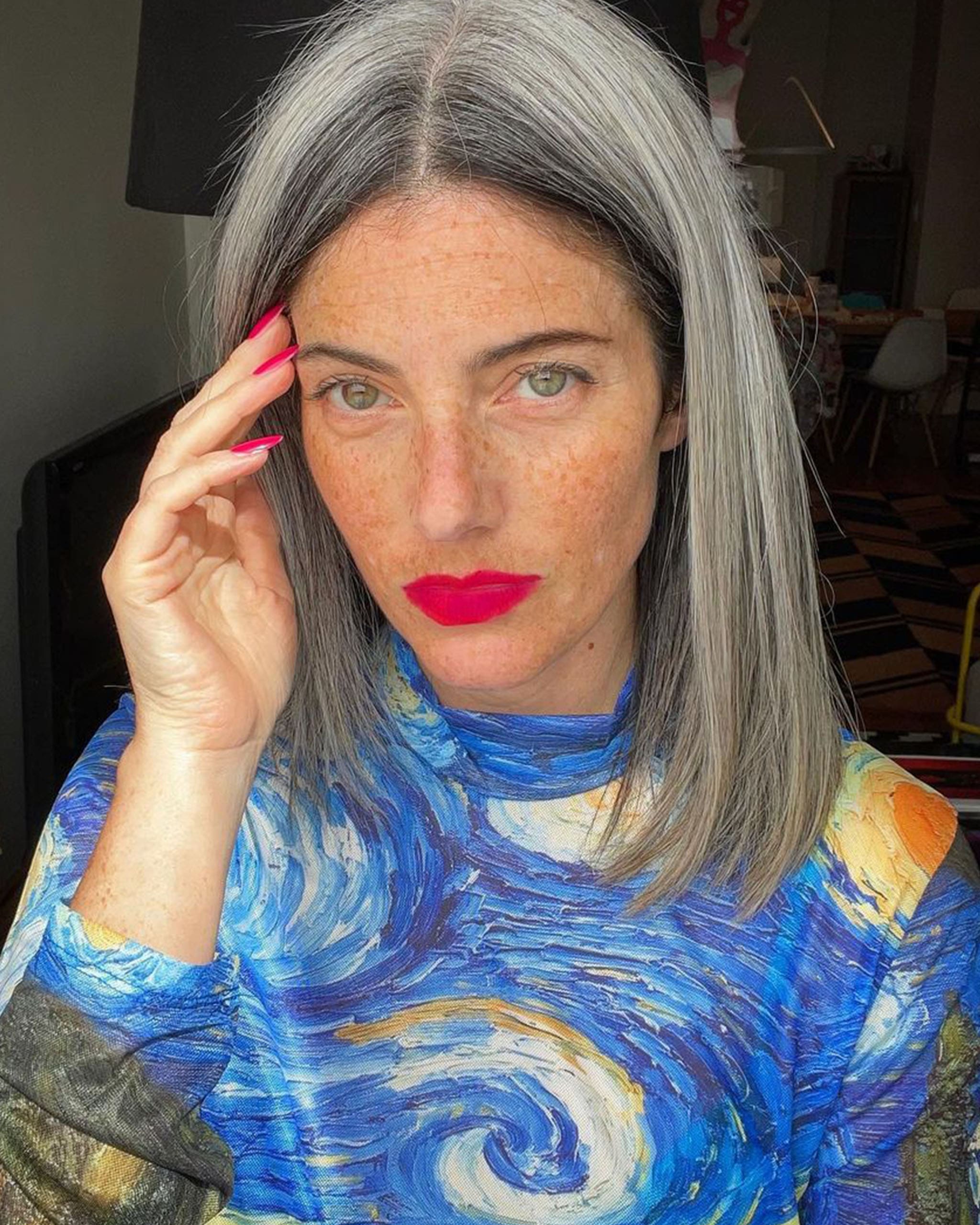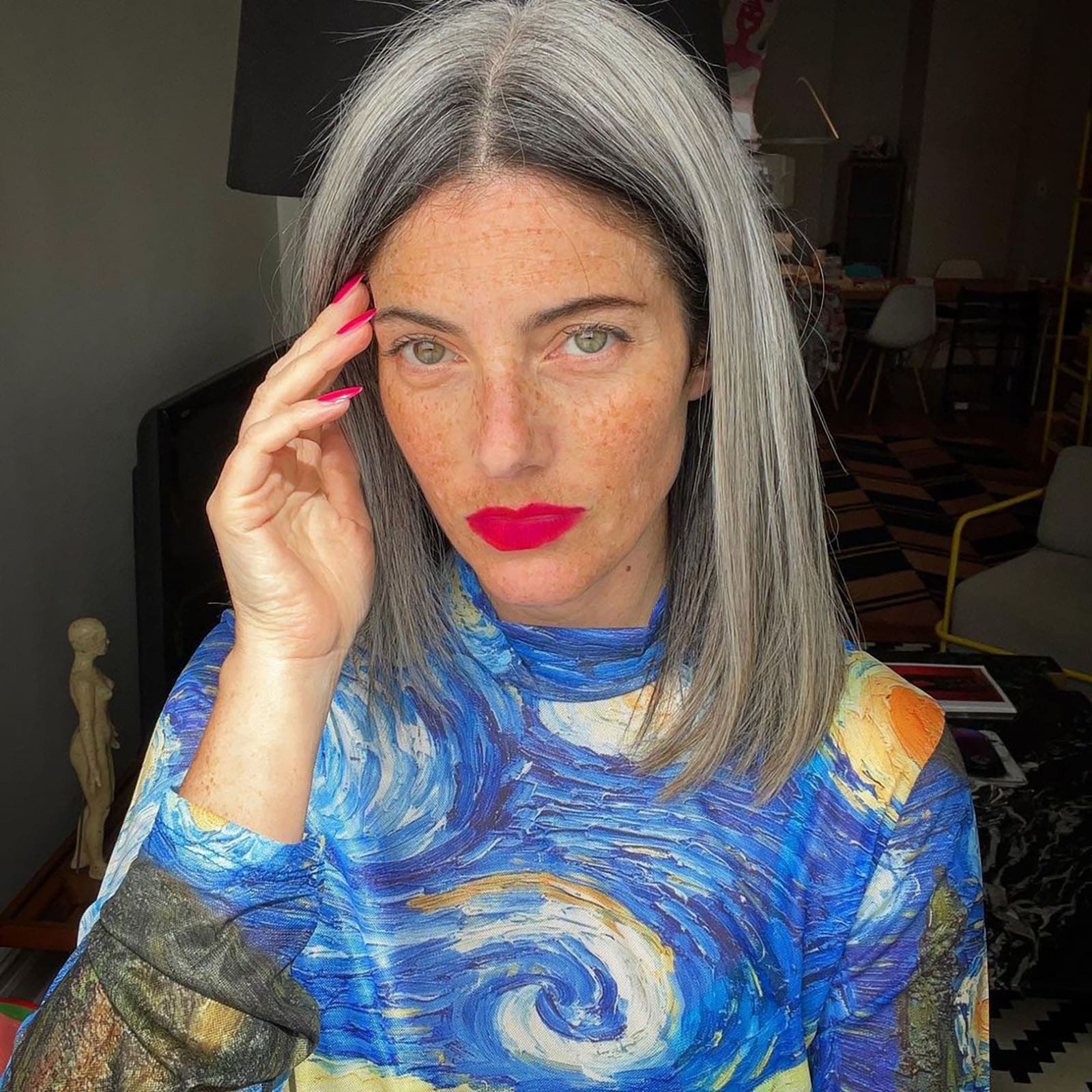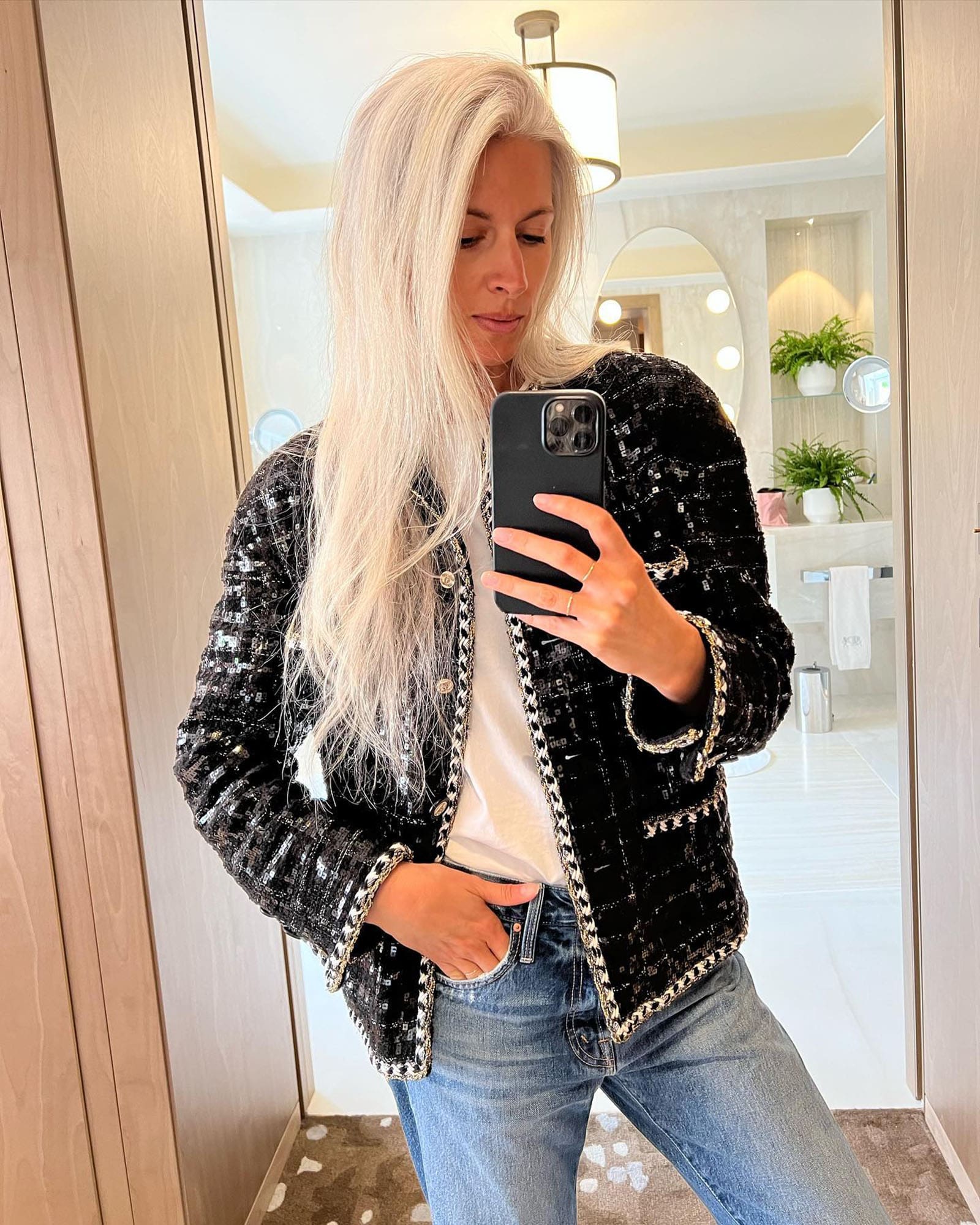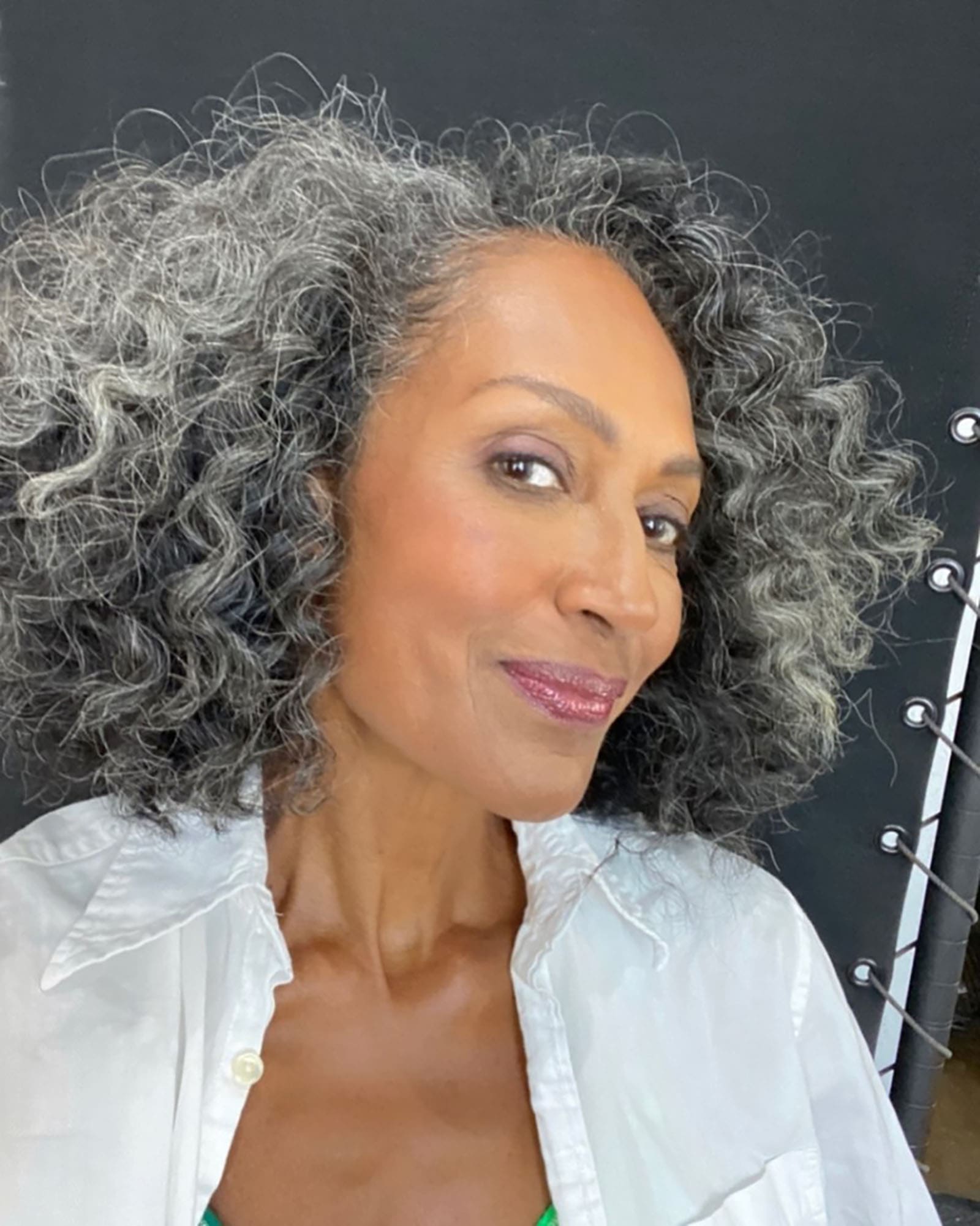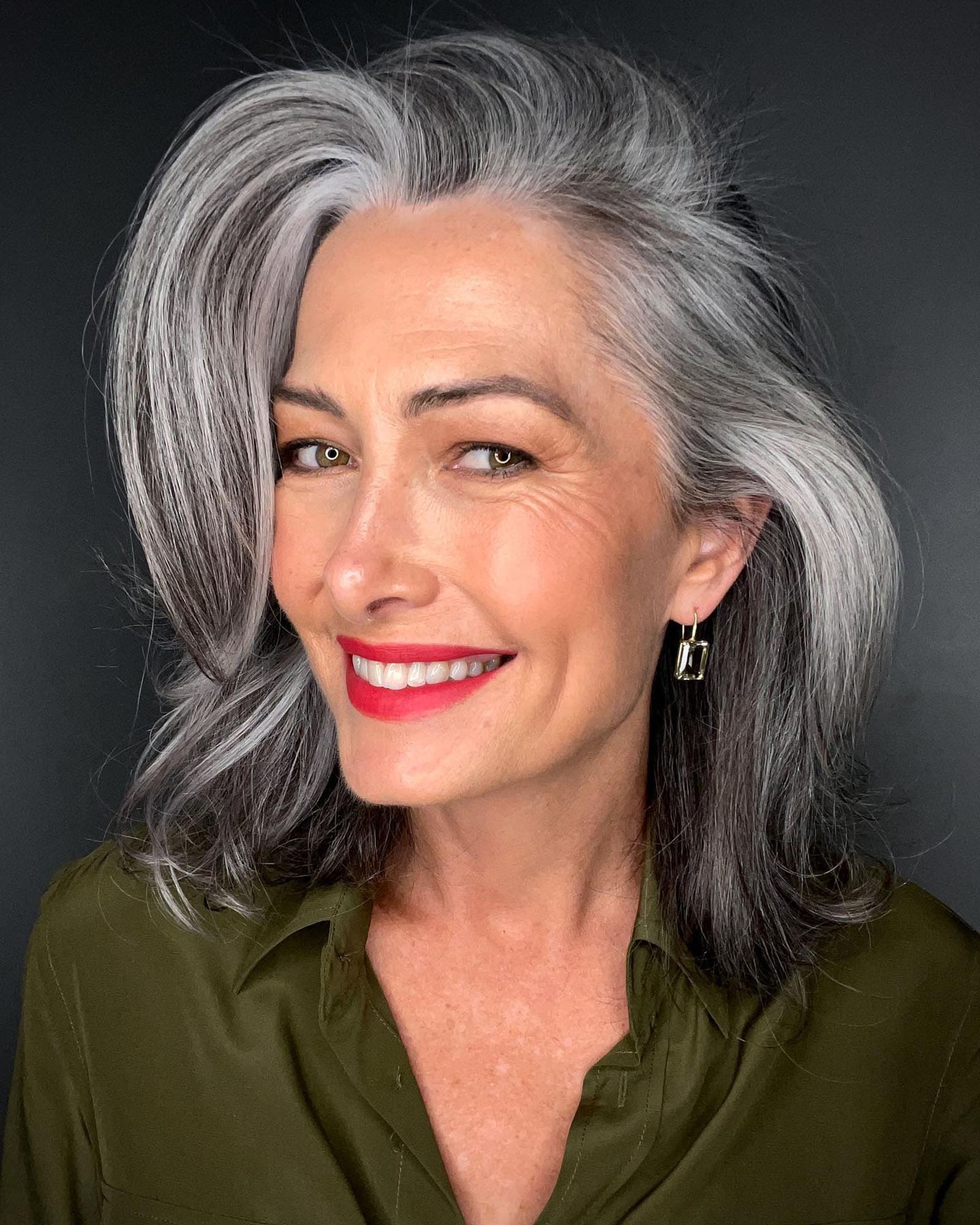Gone are the days that we fear getting gray hair. Now, we’re all about embracing it. And one buzzy coloring technique in particular helps you deal with this transition in the most natural way possible: gray blending.
A new-ish hair coloring trend that allows for smooth transition to silver hair, gray blending helps you incorporate gray hair with some tactful highlighting. Gray hair doesn’t appear out of the blue—and is nothing to be ashamed of. Over the years, the production of melanin (the natural pigment that gives color to our skin, hair, and body) is eroded and gives manes a more transparent, grayish tint. It’s a visual marker of the passing of time and when styled, it looks effortlessly chic. So if you’ve been looking for ways to work gray into your overall hair look, you’ve come to the right place. Below, the experts break down everything you need to know about gray blending, along with some hair inspo. Read on to learn more.
What is gray blending?
According to celebrity colorist and co-owner of Crane hair salon Cass Keading, whose clientele includes Kourtney Kardashian and Miley Cyrus, gray blending is a coloring technique that seamlessly blends your gray strands with your natural hair tone. Made by using a combination of highlights and lowlights, Keading says you get a softer line of demarcation when your roots grow out and it gives you a subtle dimension throughout.
“What makes this process unique is that instead of the usual practice of concealing or covering gray hair, it works with the natural gray process to create a multi-tonal effect,” she says. “This technique mixes the gray strands with your natural hair tone, resulting in a subtle, blended look.”
The difference between gray blending and other coloring techniques is all in the amount of coverage you get. Natalie Rotger, a colorist at Jenna Perry Hair Studio, says that this process just enhances your natural color while still keeping some of that gray in rather than just hiding them completely. “Most people immediately think of a permanent single process when gray hair starts to come through, which isn’t the answer for everyone,” Rotger says.
Because there are a couple of ways to go about gray blending (more on that later) and depending on how much gray you want to blend, prices may vary. She says that a gloss can be around $150 while doing mini highlights can cost about $200. Check your salon for its pricing before booking that appointment.
The benefits of gray blending
Keading says that the two biggest benefits to gray blending are its natural-looking coverage and how low maintenance upkeep can be. “Since the technique works with your natural color and grays, it requires fewer touch-ups compared to other coloring methods,” she says. “[This reduces] the maintenance frequency.” (Which in turn also saves you money in the long run).
Rotger adds that it’s the easiest way for those to work in gray hair into their look. “For those that want to fully embrace their gray but are in an awkward [and] in-between stage with their previous color or just not quite ready to commit to full gray, you can do this and then just let it grow,” she says. “If you are full gray but feel [your color] is a little dull, painting on a couple of highlights will be the perfect way to go. Overall, it’s a noncommittal way of taking care of the grays while keeping it dimensional and damage-free.”
Speaking of being damage-free, Rotger explains that opting for a gray blending gloss or a semi-permanent single process treatment is far less damaging to your hair than other coloring techniques. “It’s a good way of dabbling with hair color without having to commit,” she says.
How to blend gray hair
The color application that oscillates between highlights and lowlights. Keading says this is done to give your color dimension and a seamless blend for your grays. “Lowlights add darker tones, while highlights add shades that are lighter to create a multi-tonal effect that mixes in the strands of gray for a more subtle appearance,” she says.
Gray blending can be done in a couple of ways and which treatment to opt for depends on how much gray you want in your hair (and how often you want to come in for touch-ups). Rotger says if you want a fair amount of coverage while still keeping some gray in between strands, then opt for highlights with a gloss to provide that seamless transition. Those with finer gray hair or have a brunette base might benefit most from a simple gloss; she says that while a gloss won’t last as long, it provides a nice tint to give that natural highlighted look and you won’t have to deal with the brassiness that might come with highlighting hair.
The advantage is it can be done on any original color, whether it’s a deep brown, warm red, or bright blonde.
Aftercare
Both Rotger and Keading say that using a color-safe shampoo is key to keeping your gray blending shade looking its best. Rotger says that you want to steer clear of any products that might reverse some of the highlighting. She recommends something like the Roz Haircare Shampoo and Conditioner Foundation Duo to remove buildup without stripping color or using a purple shampoo like the Davines Alchemic Silver Shampoo. Keading likes the K18 Detox shampoo that will remove metals and minerals that can cause brassiness.
You’ll also want to avoid heat styling as much as possible and use nourishing leave-in treatments (Rotger likes the Reverie Milk Anti-Frizz Leave-In) to keep hair healthy.
So perfect for enhancing silver shades, gray blending allows you to transition to gray hair gracefully and can be intensified as the hair fiber fades over time. Easy to maintain, respectful to the integrity of the hair, and above all, carrying a powerful message of self-acceptance, this new hair trend is surely here to stay.
The most beautiful “gray blending” spotted on Instagram:
Maayan Zilberman
Sarah Harris
Pat Tracey
Annika Von Holdt
Luisa Dunn
This article was originally published on Vogue.com.
